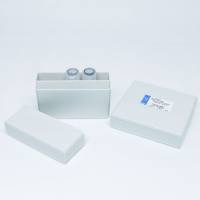Examining Vascular Remodeling in the Hypoxic Central Nervous System
互联网
互联网
相关产品推荐

ELAVL2 HUB/ELAVL2 HUB蛋白Recombinant Human ELAV-like protein 2 (ELAVL2)重组蛋白ELAV-like neuronal protein 1;Hu-antigen B ;HuB;Nervous system-specific RNA-binding protein Hel-N1蛋白
¥1344

btuC/btuC蛋白/btuC; OE_2952FCobalamin import system permease protein BtuC蛋白/Recombinant Halobacterium salinarum Cobalamin import system permease protein BtuC (btuC)重组蛋白
¥69

TCEANC2/TCEANC2蛋白Recombinant Human Transcription elongation factor A N-terminal and central domain-containing protein 2 (TCEANC2)重组蛋白TCEANC2; C1orf83; Transcription elongation factor A N-terminal and central domain-containing protein 2蛋白
¥1344

Recombinant-Mouse-Membrane-primary-amine-oxidaseAoc3Membrane primary amine oxidase EC= 1.4.3.21 Alternative name(s): Copper amine oxidase Semicarbazide-sensitive amine oxidase; SSAO Vascular adhesion protein 1; VAP-1
¥15568

ELAVL2抗体ELAVL2兔多抗抗体Nervous system-specific RNA-binding protein Hel-N1 antibody抗体ELAVL2 Antibody抗体
¥440

